The last traditional Super Monkey Ball game was Super Monkey Ball: Banana Splitz released in 2012 on the PlayStation Vita. It wasn't a hit, and it led to the series having a mobile derivative of Peggle on mobile platforms before the series started relying on HD remakes of older titles. Those titles did well enough, but it still took time to convince the executives at Sega to give the series another chance with a new game. Super Monkey Ball: Banana Rumble is the new game in the series, and for the most part, it doesn't disappoint.
Banana Rumble is split into two modes, with the story mode attracting the bulk of the attention. The story is that AiAi and his friends are relaxing on a tropical island during a big festival when a mysterious girl takes off with the banana he was about to eat. After a brief chase and the return of said banana, the girl named Palette reveals that it was just a test to see if AiAi was skilled enough to help her on a quest to find her father, who was lost searching for the famed Legendary Banana. AiAi and the group agree to help, and the search is on to find the seven legendary keys to uncover the location of the Legendary Banana — all while they're being followed by a gang of thieves and another shadowy figure.
It's a simple story intended for kids, but it's also one that might have players skipping cut scenes. The setup for the story is rather improbable, even if it has been used several times in the past by other games and shows. The game uses baby talk for all of the characters in the cut scenes, and that can be aggravating. There are some humorous scenarios, but don't expect them to elicit any laughs. In short, the story is present, but it's fine to miss the cut scenes.
For those who aren't familiar with the series, the game places a monkey in a ball and has you guiding the ball to the goal. You can pick up bananas along the way for points, but the only thing that matters is reaching the goal in under a minute. For the most part, the stages are less like mazes and more like tests of skill. The levels are suspended high in the sky, so you try to reach the end without the monkey falling to their doom. The gimmick is that you aren't controlling the ball but the level, much like an old labyrinth toy. The angle and degree of your tilts determine where and how quickly the monkey goes. It's an interesting concept and a devious one, as you're subject to the whims of the game's physics engine and the sensitivity of your analog controls.
If you're coming in from the most recent remakes, you'll find that the jump feature is missing. Depending on where you fall, you'll either lament the feature's absence or argue that it shouldn't have been there in the first place. That feature's removal makes way for a speed dash which, as the name implies, gives you a quick burst of speed with a cooldown penalty. While you might think of Sonic's move from his series, it works differently in that you're still able to move around when you're charging up the burst. The move takes a good while to get used to since you have to contend with the fact that you can miss your target direction because you've moved too far and fallen off a ledge. It also takes a while to figure out how big of a burst you're getting, since it can sometimes be inconsistent per charge. The move becomes essential later in the game, so players will have time to get a better handle on it.
Like in previous games, the level design can get wild. Pathways begin to shrink level after level until they get rail thin and command an equal degree of control and balance. Slopes suddenly make way for uneven ground with hidden pits. Platforms move and sometimes disappear from view, while pillars can jut up from the ground and bounce pads fling you up in the air. It's all rather intimidating, but the level design is balanced in such a way that you can figure out what to do after a few attempts. It helps that the physics system feels rather good and not prone to unexpected results. It's only a matter of time before series veterans will find some unexpected shortcuts in each stage.
The level design does well to maintain the series' progressive difficulty, but this is mitigated somewhat by the presence of infinite lives. That feels more like a quality of life feature rather than a setback, and it ensures that players have more incentive to experiment in finding optimal routes through a stage. The game offers some assists for players who are having trouble beating a level. Checkpoints can be activated for lengthy levels, and you can rewind a few seconds if you've made a mistake. Arrows on the ground can show you the optimal route to the goal, and you can even turn on ghosts if you want a better visual about where exactly you should go. Again, it's all optional stuff, but it's useful for those who are being introduced to the series.
The game does offer some secondary quests for those who can go through the 200+ levels offered up by the main story and subsequent EX mode that is available once you finish the campaign. Each stage features a time goal to achieve, a special golden banana to find, and a banana quota to meet before hitting the goal. This gives you a great deal to work for if you want to keep unlocking all of the cosmetics in the game before DLC kicks in. You also have a full-time trial mode that's separate from the main time goal, which contains a full global leaderboard per world, further ensuring that people are going to replay the game long after the credits roll.
One of the more pleasant surprises in the story mode is the presence of multiplayer. This isn't all that new, since a number of the previous games featured alternating multiplayer, and the few games that featured simultaneous multiplayer were competitive in nature as players tried to finish each level with as many bananas as possible. The multiplayer in Banana Rumble is cooperative, as up to four players try to reach the end to move on. This can seem like the hardest way to play the mode, but collision is a toggle, so you can have players effortlessly pass through one another. The game also doesn't have level tilt affecting other players, so someone going forward at full force doesn't force everyone else to do the same. Collectibles gained by one person count for all players, and progress carries over to the single-player game and vice versa, so you don't have two different instances. What makes this even more family-friendly is the fact that only one person needs to reach the goal for the level to be counted as complete, so you're not going to be stuck on the same stage just because someone on the team fell off or couldn't reach the goal in time.
While the single-player story mode and crazy level design were always the game highlights, the minigames were always regarded as hidden gems for the series faithful. This game features five minigames, and only one of them, Race, is returning from older titles. Banana Hunt sticks you in an arena and tasks you with collecting as many bananas as possible before time runs out. Goal Rush asks you to pass through and claim as many goal gates as you can for the team before time expires. Robot Smash has you trying to destroy robots by repeatedly running into them, while Ba-Boom has you passing a bomb to other players while avoiding the bombs before they explode.
Initially, this would seem disappointing since the number of minigames isn't as plentiful as in past games. It also doesn't help that the games aren't remarkable. Race and Banana Hunt aren't bad, but the variety of courses is slim, a complaint that's common to the other minigames. Goal Rush always sends you to the beginning of the level when you hit any goal, which can be annoying when you've barely explored what the course has to offer. Ba-Bomb is more exciting because the levels are large, but the time periods are short enough that finding someone to pass the bomb to can be difficult, while evading someone with a bomb is easy. As for Robot Smash, it's enjoyable if you don't mind how a simple touch with no momentum can still damage the robots.
Despite these issues, there's some genuine excitement due to a few factors. Online play is something that fans have been clamoring for in the remakes. Not only is it present in Banana Rumble, but it also exists in the story mode, so even those who don't have friends to play with locally can still enjoy the game with others. The performance has been lag-free for the sessions played during the review period and the game will always fill a match with bots if not enough people can be found in time; it's a great move to ensure that anyone can play multiplayer at any time.
The other thing that people will get excited over is the fact that every minigame has a total of 16 players in mind, whether you're offline or online. The number of characters present for each of these minigames transforms them into chaotic affairs that are enjoyable instead of being a burden. The minigames that would be almost unbearable with just four people suddenly become more tolerable, and now there's a desire to see some of the old minigames return with an expanded 16-player lineup just to see how crazy things can get.
Graphically, the game is quite good. Banana Rumble still carries some vibrancy in its colors, even though it feels muted when compared to the original entries. Even though the monkeys are trapped in balls, they still have some character, which is evident when their body language and facial expressions change while near a ledge. There are some effects when bouncing off of things, but they aren't overwhelming enough to become distracting. The same holds true for the HUD, which provides a clean view of the levels.
There are only two areas where the graphics can falter. The first is in the overall picture quality, which can look a tad soft, regardless of whether you're viewing the game on a 1080p TV, a 4K TV, or even the Switch's own screen. The second point of contention is with the frame rate. Story mode and the main menu show the game at 60fps, but that soft picture can make it difficult to tell at times. Move to the minigames, however, and the frame rate drops to 30fps. It locks to this no matter how many people are present or how big the stages are, and the shift can be jarring. Players looking forward to playing predominantly in multiplayer will have to hold out hope that other platforms will get this game later if they want to see the frame rate go to 60fps or above.
The audio is mixed but mostly leans toward good. As mentioned before, the babbling baby talk of the story's cut scenes can be a great source of annoyance, but the game opts for a regular announcer everywhere else that isn't so grating on the ears. The sound effects are good, but those who are hoping for a return to the classic effects from the first few games will be disappointed to hear that only the new ones from the remakes are present. The music is awesome, though, especially in the later stages of the story mode, where it becomes more energetic than some tracks in previous games.
Overall, Super Monkey Ball: Banana Rumble is a pleasant experience. The story may be disposable, but the levels feature some ingenuity that makes good use of the current physics system without feeling unfair. The number of levels will please fans who love the challenge. While the minigames aren't anything fresh, the presence of multiplayer just about everywhere marks a good step forward for the series. Hardcore fans won't see this as besting the original games from all those years ago, but they will still have a good time with this entry. We're hopeful that Banana Rumble marks the start of new games in the series.
Score: 7.5/10
More articles about Super Monkey Ball Banana Rumble


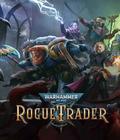
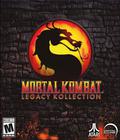
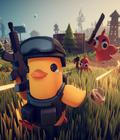
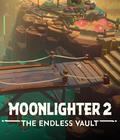
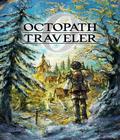
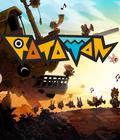
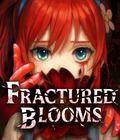

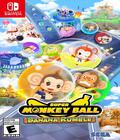 Super Monkey Ball Banana Rumble is an all-new Super Monkey Ball game featuring 200 all-new stages and 16-player online battles!
Super Monkey Ball Banana Rumble is an all-new Super Monkey Ball game featuring 200 all-new stages and 16-player online battles!






















































